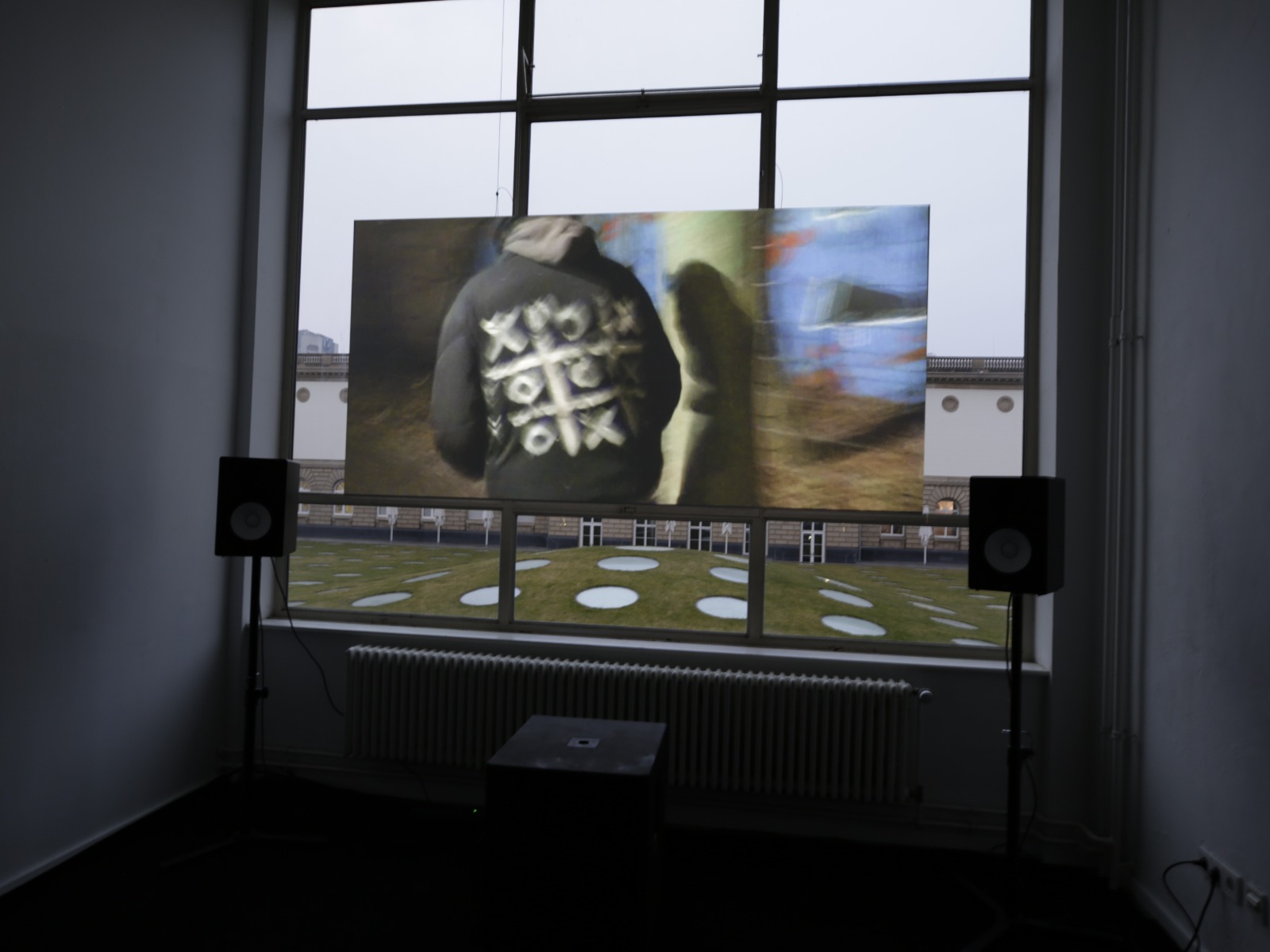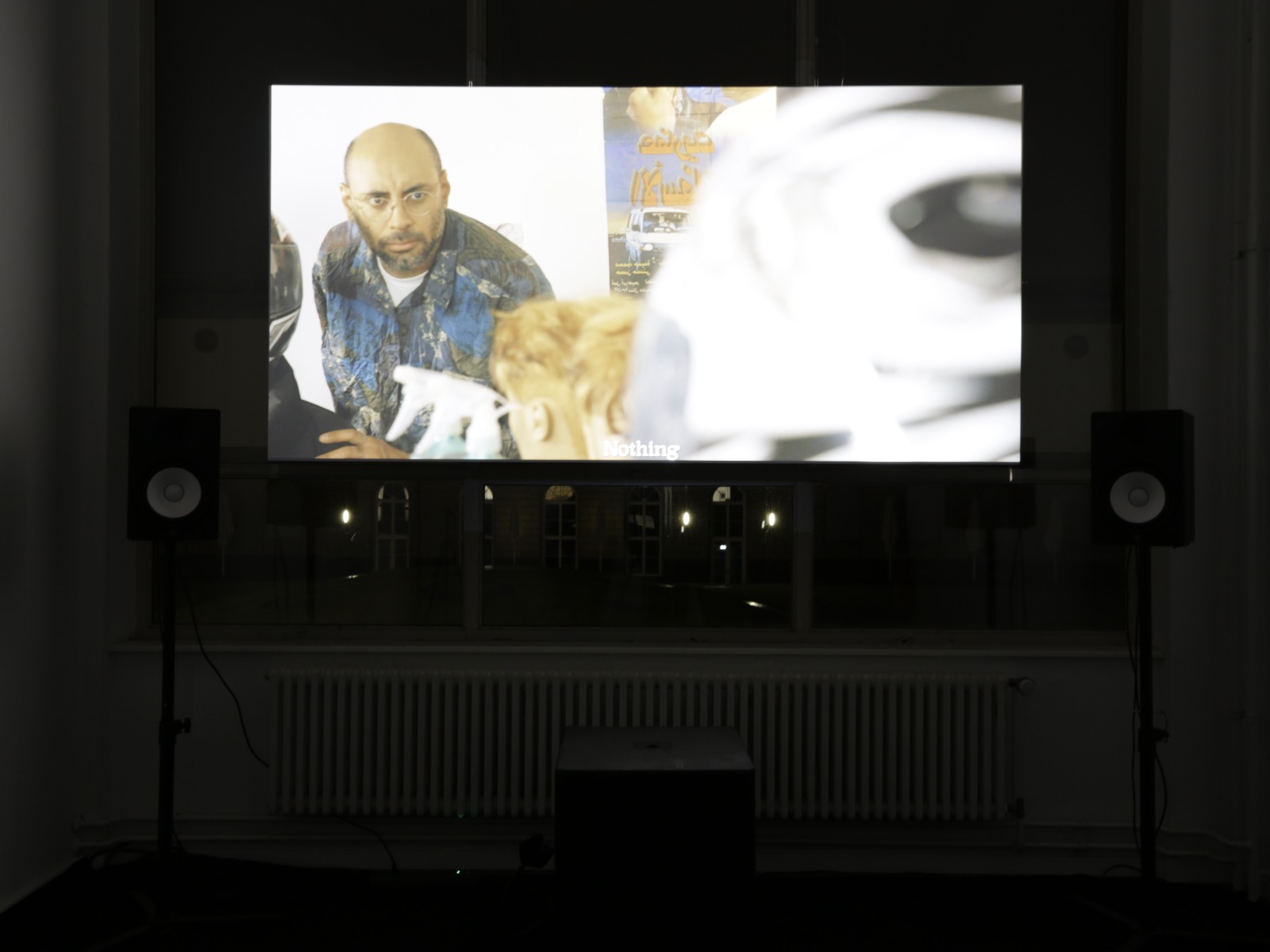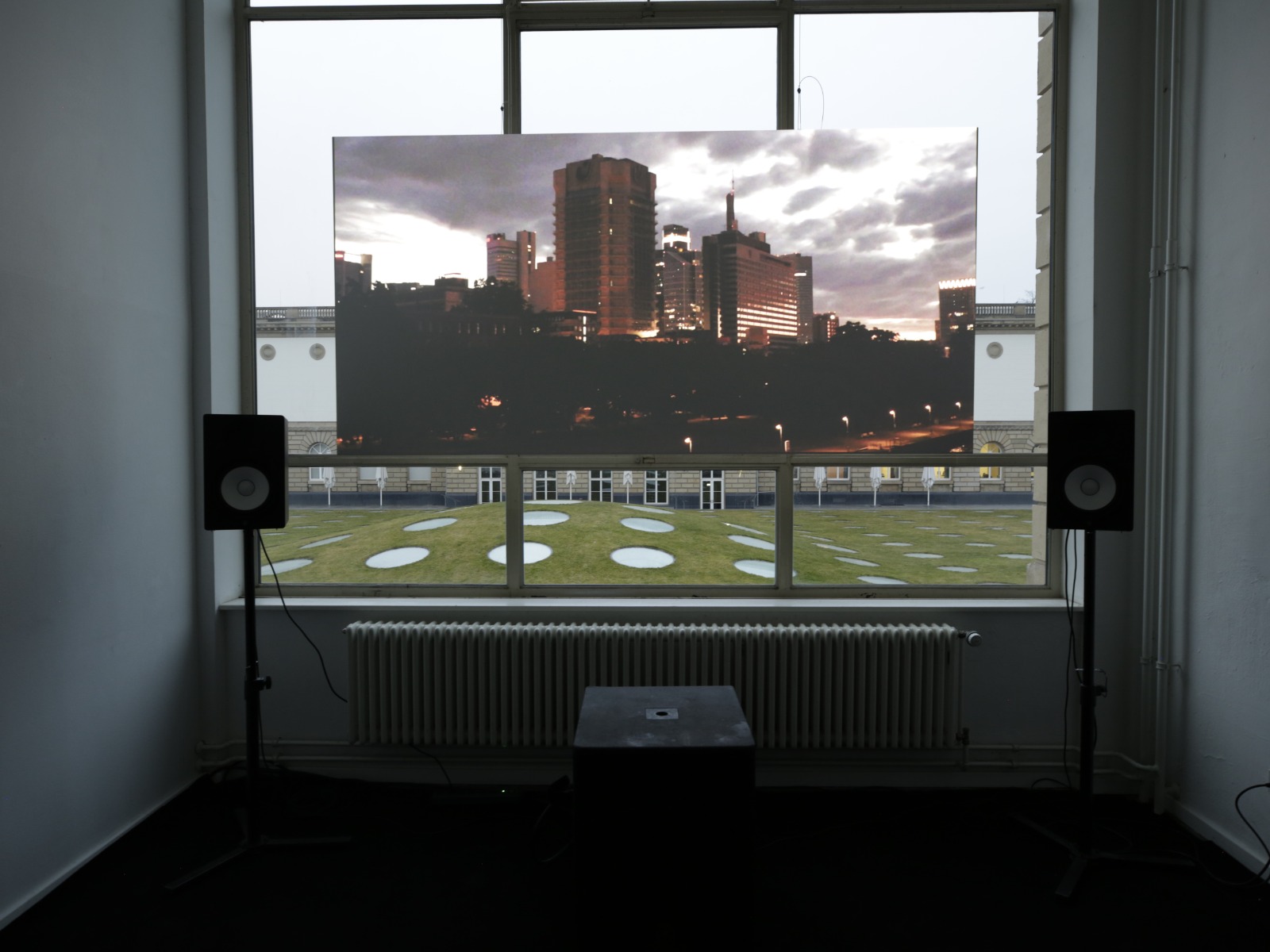HOLY GRAIL
Video/2025
I have been taken by the opening scene of Alexander Kluge’s film The Power of Emotions: a timelapse image of Frankfurt’s skyline set to the overture of Wagner’s Parsifal. Parsifal, the pure fool called to heal the guardian of the Holy Grail, is an object of many myths in European history—a figure of both spiritual and economic value, said to have been used by Jesus to turn his blood into wine.
What runs in parallel is a character in the film who calls an insur- ance company to have the expenses of protecting himself from sunlight that is reflected by the towers covered, and a hairdresser who is confused by his occasional inability to see his clients in the mirror. Finally, there is likely one of his clients, who runs after the woman operating the answering machine at the insurance company.
The film’s characteristic dichotomy between day and night speaks to the nature of its inhabitants. As suggested by the fragments and scenes, there is a duality: a fool and a demon, a hero and a killer. This duality, though productive in creating images, de- taches us from political history, bodily presence, and the sensuous.
This dichotomy is also visible in the use of images, oscillating be- tween found footage and highquality produced footage—the latter being more fitting for the screen. The screen itself, installed directly by the window, shows the film during both day and night, creating a tension between two opposing light directions.
I have been taken by the opening scene of Alexander Kluge’s film The Power of Emotions: a timelapse image of Frankfurt’s skyline set to the overture of Wagner’s Parsifal. Parsifal, the pure fool called to heal the guardian of the Holy Grail, is an object of many myths in European history—a figure of both spiritual and economic value, said to have been used by Jesus to turn his blood into wine.
What runs in parallel is a character in the film who calls an insur- ance company to have the expenses of protecting himself from sunlight that is reflected by the towers covered, and a hairdresser who is confused by his occasional inability to see his clients in the mirror. Finally, there is likely one of his clients, who runs after the woman operating the answering machine at the insurance company.
The film’s characteristic dichotomy between day and night speaks to the nature of its inhabitants. As suggested by the fragments and scenes, there is a duality: a fool and a demon, a hero and a killer. This duality, though productive in creating images, de- taches us from political history, bodily presence, and the sensuous.
This dichotomy is also visible in the use of images, oscillating be- tween found footage and highquality produced footage—the latter being more fitting for the screen. The screen itself, installed directly by the window, shows the film during both day and night, creating a tension between two opposing light directions.






